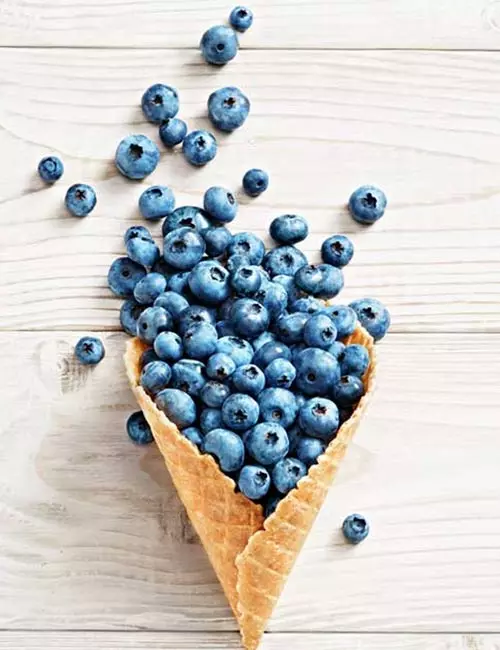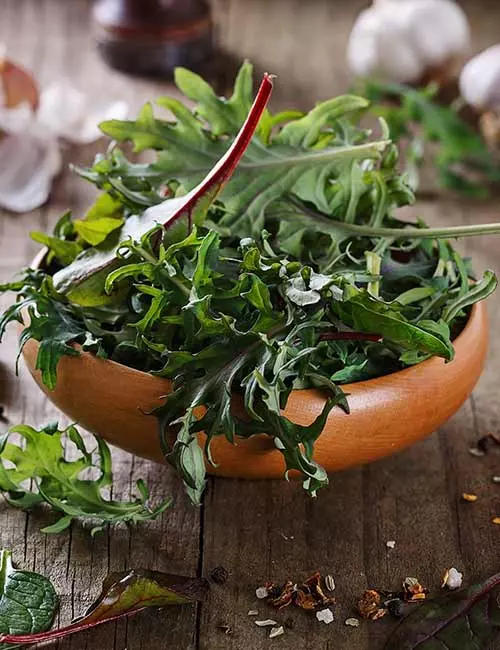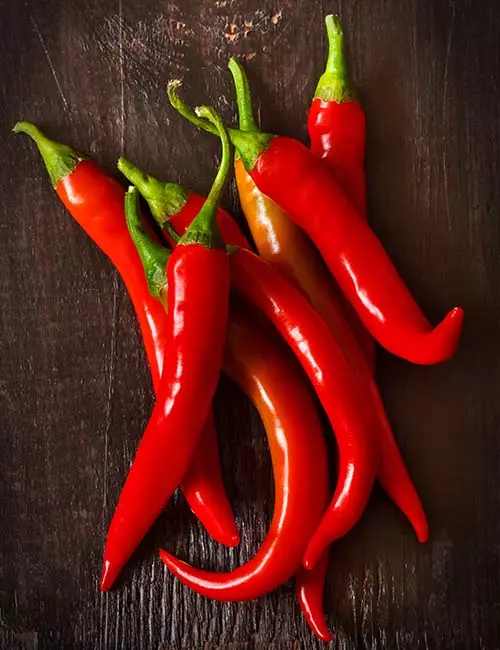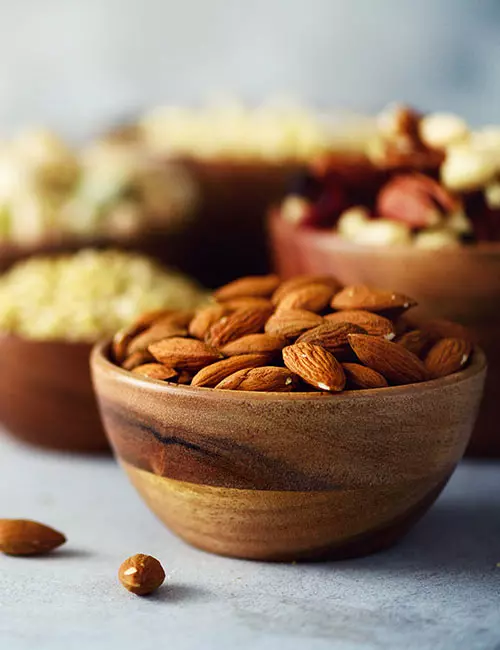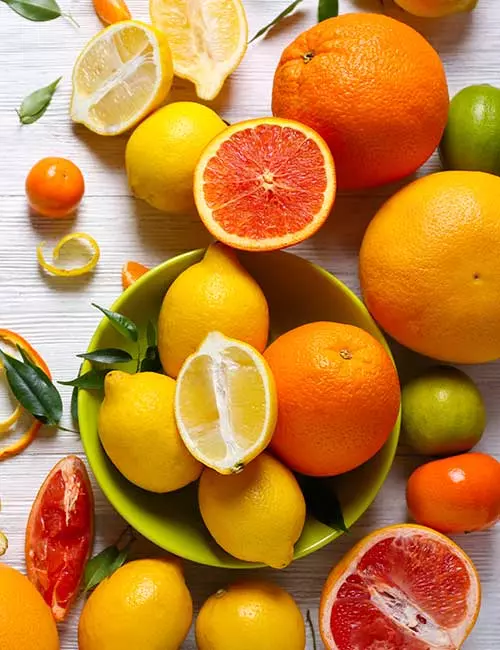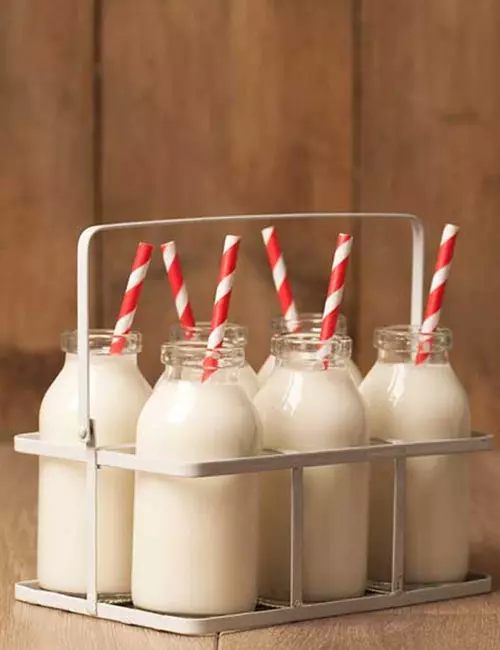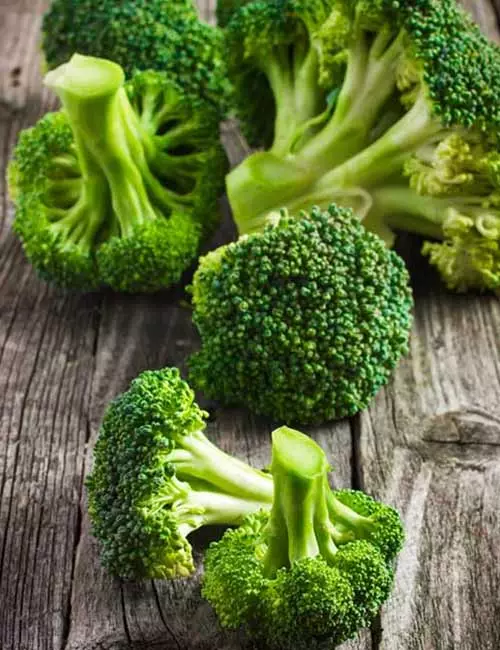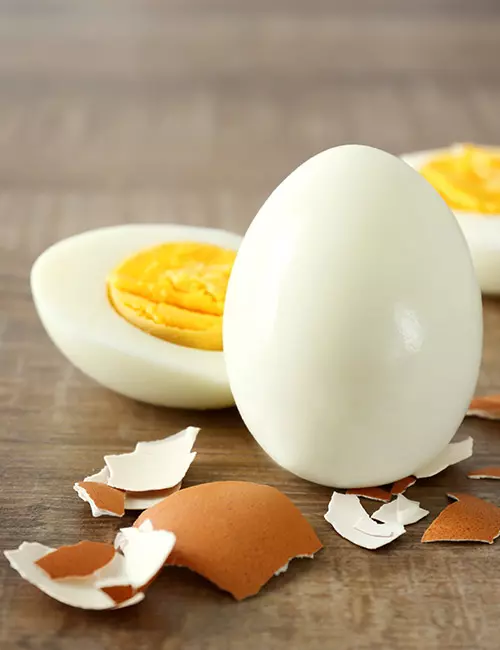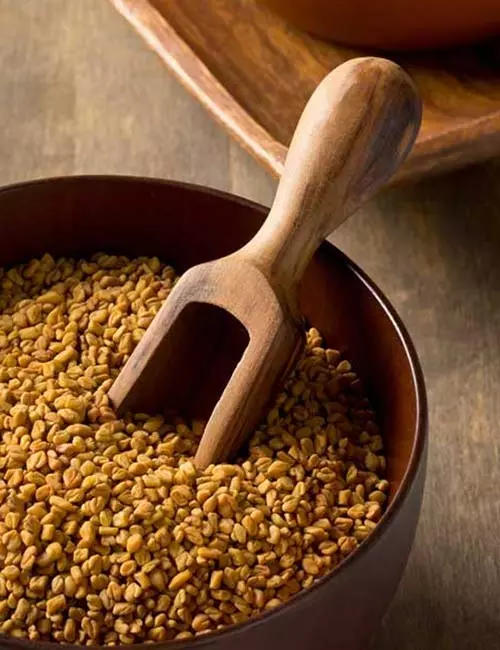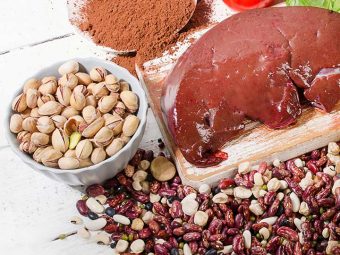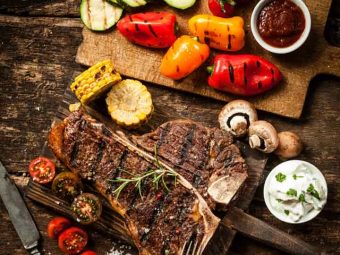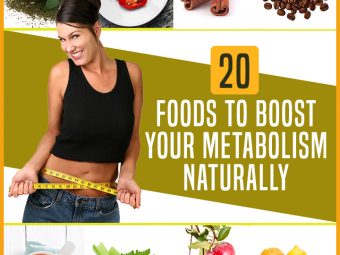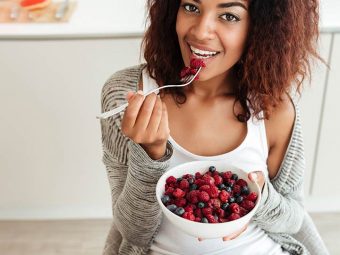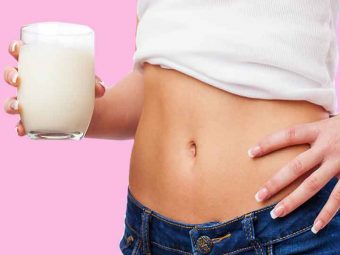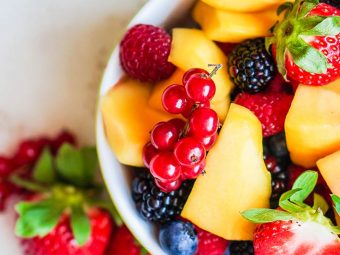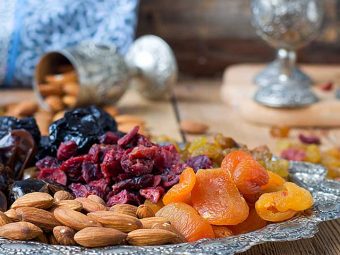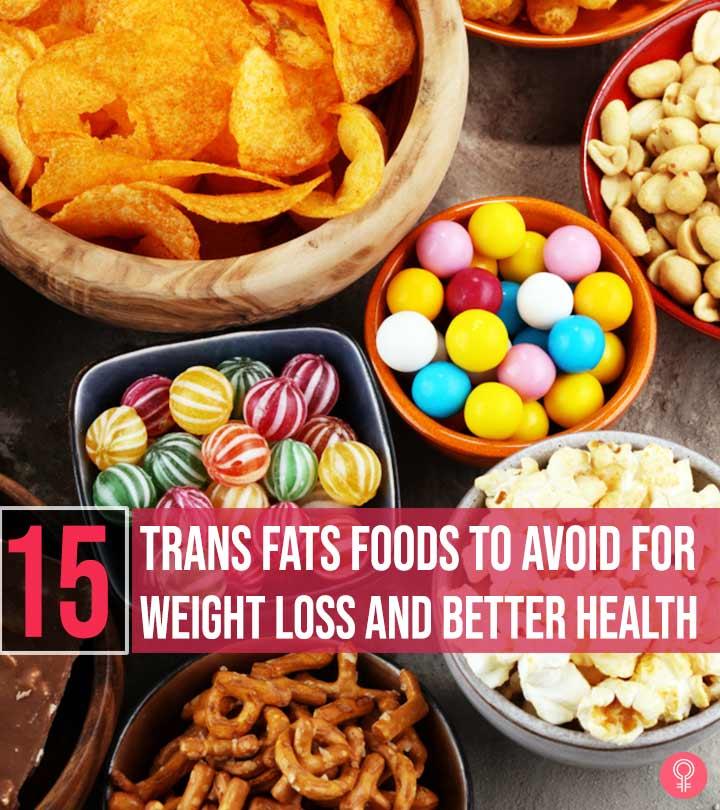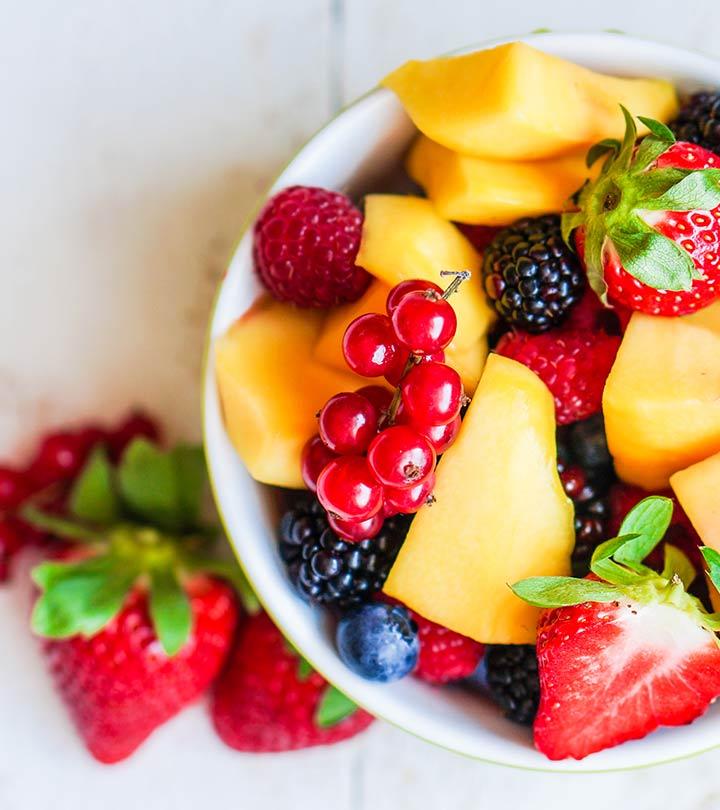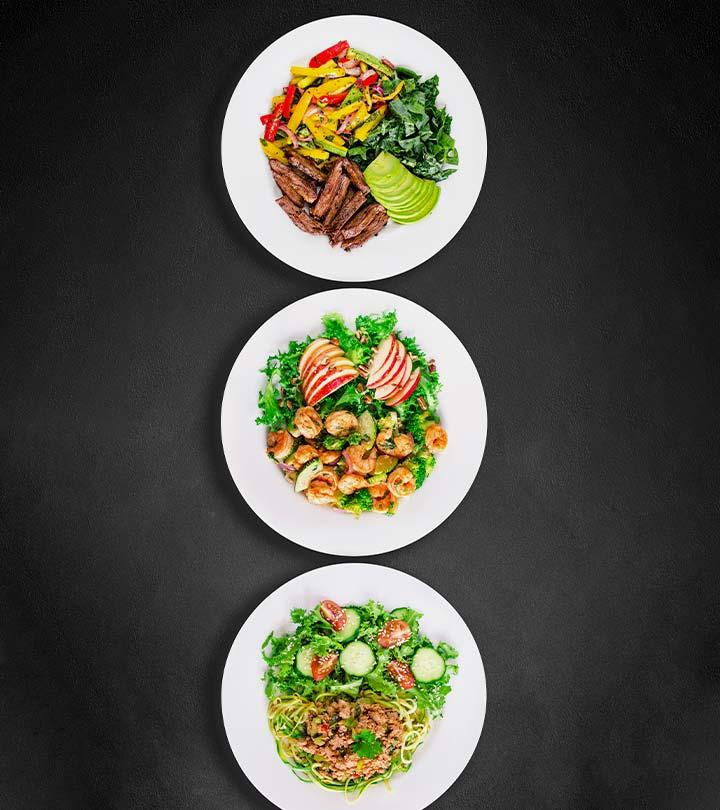27 Best Superfoods For Weight Loss To Include In Your Diet
Incorporate a few tasty ingredients into your diet to help you on your fitness journey.
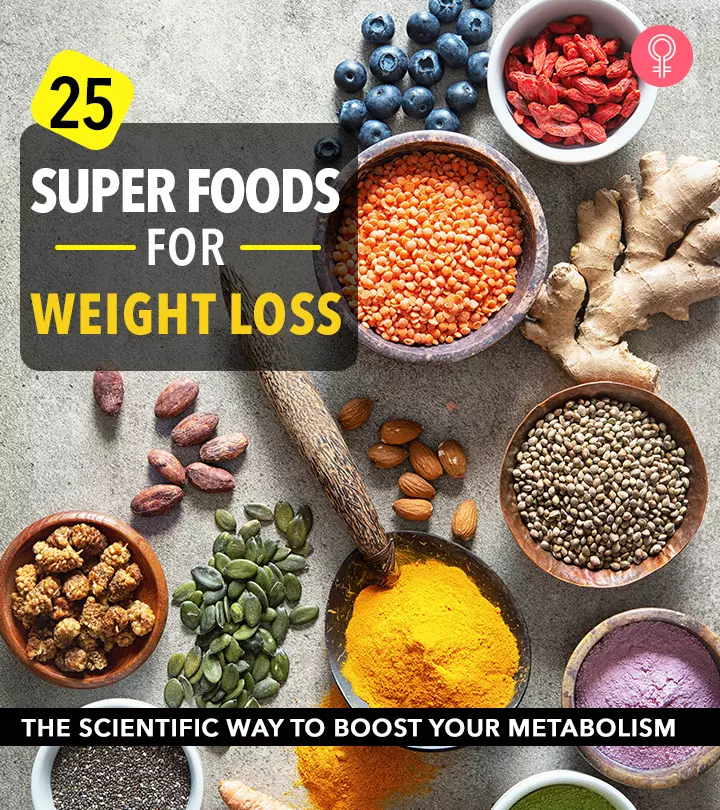
Image: StyleCraze
Anyone on a weight loss journey knows how difficult it is to find low-calorie, nutritious foods. Thankfully, there are many superfoods that you can try out to ensure healthy eating in your transformation journey. Their fat-burning ability is exceptional, making them ideal for both short-term and long-term weight loss. Superfoods can solve most health issues and boost immunity thanks to their anti-inflammatory and antioxidant properties.
However, there is a practical issue. In supermarkets, these foods are not branded as “superfoods.” You need to know what to buy. Here is a list of 27 research-backed superfoods for weight loss. This is a one-stop shop for losing weight without feeling hungry all the time. Check it out!
In This Article
27 Best Superfoods That Burn Fat
1. Green Tea
At only 2 calories per cup, green tea is the best beverage for weight loss. It contains epigallocatechin gallate (EGCG), a phytonutrient that has antioxidant properties. It helps in scavenging the harmful free oxygen radicals that cause weight gain due to inflammation in the body (1). Consume 2-4 cups (8 fl oz) of green tea per day to see a visible effect in three weeks.
Denise Larkin, a blogger, shared her personal experience about consuming green tea for various health benefits. She writes, “Drinking green tea has quickened my metabolism as I have been losing weight weekly. All I need to do now is lose 2 more stone to get to my ideal weight (i).”
2. Avocado
One medium avocado contains 322 calories. But, the healthy fats and nutrients in avocado make it one of the best foods for weight loss. Researchers found that healthy monounsaturated fatsi XHealthy fats that help reduce inflammation, lower cholesterol levels, and promote weight loss. , dietary fiber, and other beneficial phytochemicalsi XChemical compounds found in vegetables, grains, and fruits that help in plant growth and fight against pathogens. in avocado aided weight loss and protected against metabolic disorders (2).
3. Blueberries
Blueberries are always Instagram ready! They are delicious and healthy and impart a hypnotizing color to any cereal or smoothie bowl! Half a cup of these dark blue fruits contains only 42 calories. They are loaded with vitamins A, C, and K, calcium, magnesium, phosphorus, and dietary fiber. Blueberries keep hunger pangs at bay, may help lower blood sugar, and prevent insulin resistance (3).
 Quick Tip
Quick Tip4. Banana
Have you been avoiding bananas because you think it is going to bulk you up? Well, science says that maybe that’s the reason you are unable to lose weight! Surprised? One large banana contains only 121 calories. The payoff you get is in terms of energy and satiety. The fiber, vitamins, and minerals in bananas also help improve insulin sensitivity, thereby protecting you from type 2 diabetes (4). However, ripe bananas also raise blood sugar levels. It is best to consume green bananas instead of ripe ones if you have pre-diabetes or diabetes.
5. Goji Berries
The rusted red Goji Goji berries are low in calories (1-3 oz berries contain 23-69 calories). The antioxidants present in them help reduce the oxidative stress in your body. They help reduce waist circumference, improve lipid profile, and prevent cardiovascular disease in patients with metabolic syndrome (5).
6. Seeds – Flax, Chia, Pumpkin, And Sunflower
Flax seeds, chia seeds, pumpkin seeds, and sunflower seeds are loaded with polyunsaturated fats. The healthy fats in these seeds help reduce inflammation in the body. This protects the body from inflammation-induced weight gain.
They are also high in dietary fiber, which forms a viscous gel-like layer in the stomach. This gel layer traps the food and slows down the digestion and absorption process, thereby increasing satiety (6), (7).
 Quick Tip
Quick Tip7. Leafy Greens – Kale And Spinach
A cup of spinach contains 7 calories, and a cup of kale contains 33 calories. Spinach helps neutralize harmful free oxygen radicals. It also increases the expression of genes involved in metabolism and prevents you from consuming excess amounts of food by secreting satiety hormones (8). On the other hand, consuming kale may lower blood glucose levels (9).
8. Lentils
Yellow, red, green, or black – lentils are one of the best nutrient sources since time immemorial. Apart from being rich in protein, they also contain dietary fiber, iron, potassium, folate, and manganese in abundance (10). Half a cup of boiled lentils contains only 165 calories! Protein and dietary fiber take time to digest. That’s why you feel satiated for a long duration after consuming lentils.
9. Chili
Add some heat to your food to lose weight! American scientists have found that chilies contain capsaicin, which is responsible for all the good health benefits. It aids weight loss by lowering bad cholesterol (LDL) levels, reducing inflammation, increasing antioxidant activity, preventing metabolic disorders, and protecting your heart (11).
10. Oils – Olive Oil And Avocado Oil
Olive oil and avocado oil are great for cooking. These oils are sources of healthy unsaturated fats, vitamin E, iron, and calcium. Various studies on olive oil show that it aids weight loss in obese patients and should be consumed by those who want to lose weight (12), (13).
11. Nuts – Almonds And Pistachios
Almonds are great sources of dietary fiber, healthy fats, vitamins, and minerals. Four almonds contain 28 calories. Scientists also found that almonds aided greater weight loss as compared to low-calorie diets (LCD) (14).
Fifteen in-shell pistachios contain 60 calories. Pistachios are a great snack for weight loss. They are loaded with antioxidant and anti-inflammatory properties and help lower serum triglyceride levels, protect from type 2 diabetes, reduce blood pressure, and lower the chances of cardiovascular diseases (15).
12. Greek Yogurt
Greek yogurt is loaded with protein and probiotics. A hundred grams of Greek yogurt contains about 60 calories. It is a great snack option as it helps improve satiety and digestion (16), (17).
13. Citrus – Grapefruit, Lemon, And Limes
Citrus fruits are low in calories and good sources of vitamin C. Half a grapefruit contains about 50 calories. People who consume grapefruit have a better blood lipid profile, lower LDL (bad) cholesterol, and improved insulin sensitivity and are protected from cardiovascular diseases (18), (19).
Other citrus fruits like oranges, limes, lemons, and kiwis are good sources of vitamin C, which helps increase satiety (20).
14. Fatty Fish – Salmon, Sardine, And Mackerel
Consume fatty fish like salmon, mackerel, and sardines to lose weight and protect your heart from various diseases. They help rebalance the omega-3 and omega-6 ratio. How?
The foods that we generally consume are high in omega-6, which leads to inflammation and stress in the body. This, in turn, causes toxic build-up in the body, leading to weight gain and metabolic disorders. Fatty fish are loaded with omega-3 fatty acids, and higher intake of omega-3 will lower inflammation and stress levels (21). This leads to weight loss.
15. Full-Fat Milk
One cup of full-fat milk contains 146 calories. New scientific evidence suggests that full-fat milk can aid weight loss. Scientists at the University of California, San Francisco found that full-fat milk and dairy consumers were on the lower side of the obesity scale. They have hypothesized that the butyric acid present in milk helps lower inflammation and inflammation-related fat gain. Full-fat milk also increases insulin sensitivity and metabolism (22).
16. Quinoa
Quinoa is a pseudo-grain that is highly recommended for those trying to lose weight. Half a cup of quinoa has only 114 calories and fills you up for at least two hours.
Researchers at Illawarra Health and Medical Research Institute have found that quinoa contains proteins, saponins, and 20-hydroxyecdysone. These phytonutrients help improve blood lipid profile and prevent weight gain (23).
17. Broccoli
If there’s one food that can protect you from weight gain, heart disease, aging, cancer, and every other disease on the planet, it is broccoli. So, like it or not, you must include it in your diet to reap the various benefits it provides (24). Broccoli is low in calories (½ cup of broccoli has only 15 calories!) and rich in dietary fiber, which increases your satiety levels. The antioxidants present in it help reduce toxin and inflammation levels.
18. Brown Rice
Half a cup of brown rice contains 108 calories. Korean scientists found that consuming brown rice regularly led to decreased waist circumference in type 2 diabetes patients (25). Here’s how it works.
The husk on brown rice is a good source of dietary fiber, vitamins, and minerals. By consuming controlled amounts of brown rice with veggies and protein, you can get an extra dose of nutrients. These help cleanse your colon and improve digestion. As a result, your metabolic rate increases, and you lose weight without feeling hungry all the time.
19. Eggs
Eggs are great sources of protein, fat-soluble and water-soluble vitamins (vitamins A, B, C, D, E, and K), minerals like iron and selenium, and antioxidants (26).
One to two whole eggs contain about 78-156 calories. Consuming eggs for breakfast will keep you recharged throughout the day, prevent you from snacking on junk food, and also improve your brain function. The vitamins present in the eggs will aid better and proper functioning of your body.
20. Cinnamon
If you are doing everything right and yet are unsuccessful at losing that last bit of flab, consume Ceylon cinnamon. Chinese and American scientists found that the proanthocyanidins in cinnamon had a direct effect on blood glucose, blood lipid, and insulin levels. The researchers found that consuming 500 mg of water extract of cinnamon increased insulin sensitivity and lowered LDL cholesterol in the participants (27).
21. Oats
Oats are the most common healthy breakfast consumed all over the world. That’s because half a cup of oats contains 109 calories. Oats are loaded with dietary fiber and essential nutrients like folate, calcium, magnesium, phosphorus, potassium, proteins, and omega-3 fatty acids.This complex carbohydrate gets digested slowly, so your blood sugar levels remain stable.
Scientists at Louisiana State University have found that oats have anti-inflammatory properties, increase insulin sensitivity, and improve digestion and colonic transit period. This leads to reduced fat accumulation and keeps hyperglycemiai XHigh blood sugar caused due to the build-up of glucose in the bloodstream due to low production of insulin in the body. in check (28).
To get the complete benefits of oats for weight loss, it is important to avoid consuming oats on their own. Balance it out with protein and/or healthy fat to help in maintaining normal blood sugar levels. Consuming protein and healthy fat with oats can help to keep blood sugar stable. They will slow down the absorption of sugar into the bloodstream. Poorly managed blood sugar can lead to weight gain and sugar cravings.
22. Sweet Potato
A medium-sized boiled sweet potato contains 112 calories. Boiled sweet potatoes with skin have low GI (glycemic index) and are loaded with dietary fiber, vitamins A and C, and the minerals calcium and iron. Chinese scientists studied the effect of sweet potato on a high-fat diet induced obese mice. They found sweet potato helped reduce obesity and metabolic risks and improved lipid profiles (29). Wish to shed fat with this delicious root vegetable? Read about sweet potato diet here.
23. Fenugreek Seeds
Fenugreek seeds are one of the most effective weight loss superfoods. They work by boosting your metabolism, preventing fat accumulation, increasing insulin sensitivity, improving antioxidant activity, and promoting downregulation of fat synthesizing enzymes (30).
Soak two teaspoons of fenugreek seeds overnight in a cup of water. Strain and drink the water first thing in the morning.
24. Watermelon
A cup of juicy watermelon contains only 47 calories. Watermelon contains a potent antioxidant called lycopene (31). It is also a great source of complex carbs, vitamins, minerals, and water. Consuming a cup of watermelon when you are hungry will keep you satiated for at least an hour, rehydrate you, and lower inflammation in your body. As a result, you will start to lose weight without even knowing it!
25. Spirulina
Spirulina started out as a food for soldiers at war or scientists in space. It has quickly got popular in the mainstream fitness market due to its high protein content. It is a spiral-shaped bacterium loaded with health benefits for humans.
A tablespoon of protein-dense spirulina contains 20 calories. It is loaded with proteins, fatty acids, calcium, polysaccharidesi XLarge carbohydrate molecules made of many simple sugars that serve as essential sources of energy and provide high-value nutrition. that stimulate DNA repair, beta-carotene, vitamin E, water-soluble vitamins, iron, magnesium, potassium, and other trace minerals (32).
Polish scientists found that three months of regular consumption of spirulina helped improve BMI, blood pressure, and endothelial function (33).
26. Tomatoes
A cup of tomatoes contains only 32 calories. Tomatoes have a high water content and are rich in vitamin C and fiber. They are a perfect addition to any weight loss diet (34). When coupled with calorie restriction, they may help reduce oxidative stress and inflammation and possibly accelerate weight loss (35). You can add tomatoes to soups, salads, curries, and other dishes to reap their benefits.
27. Grapefruit
This fruit is rich in water and fiber and may help reduce appetite, promote satiety, and is associated with modest weight loss (36). You can add this delicious citrus fruit to your salads, juices, desserts, or salsas.
There you have it – 27 superfoods for weight loss that you can now easily identify in the supermarket. Also, follow healthy habits like regular exercising, resting, meditating, avoiding too much alcohol, and having some ‘me time.’ Follow these tips, and you will feel better inside and out. Good luck!
Expert Tip:When you consume carbohydrates (such as starchy vegetables like sweet potatoes, fruit, or brown rice), combining it with protein/healthy fat can help stabilize blood sugar levels because they slow down the absorption of sugar into the bloodstream. Properly managed blood sugar will help manage appetite, reduce sugar cravings, and help with weight loss.
Infographic: Easy Superfood Recipes To Add To Your Diet
Superfoods are ideal for weight loss as well as overall health and wellness. Their antioxidant and anti-inflammatory properties may lower blood sugar, improve lipid profile, and keep hunger at bay. The good news is you can try some simple recipes at home to make your weight loss journey easy and fun.
Check out the infographic below to know more. Illustration: StyleCraze Design Team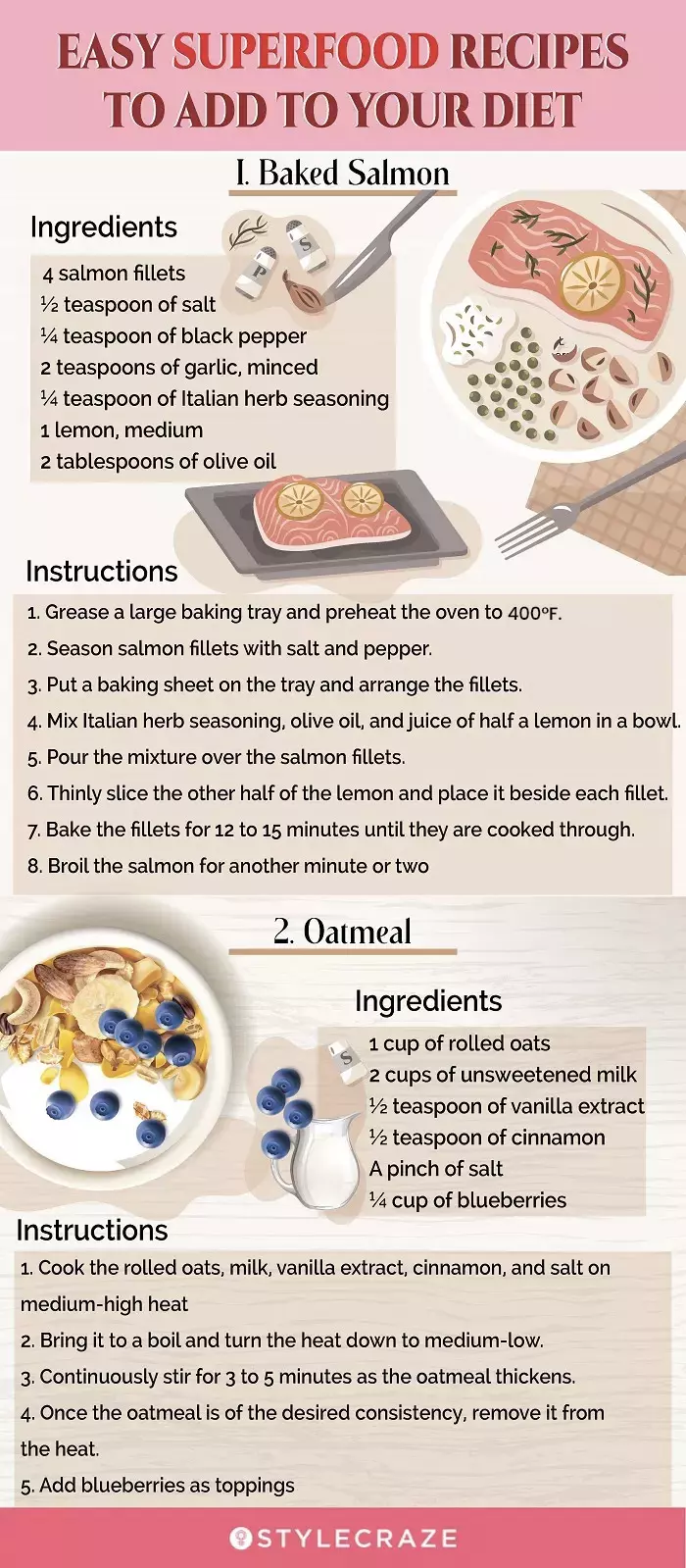
Consuming superfoods for weight loss is an excellent way to shed a few pounds naturally. These include both high-calorie and low-calorie foods that are rich in dietary fiber, which is said to increase satiety and reduce energy intake. Foods like green tea, banana, avocado, blueberries, goji berries, seeds, lentils, and chili also have anti-inflammatory and antioxidant properties. So, they may also benefit your health in other ways apart from helping you lose weight. You must also adopt a healthy lifestyle, like exercising, meditating, and avoiding alcohol, for effective results.
Frequently Asked Questions
What is the #1 fat burning fruit?
Avocado is known for its fat-burning properties because of the presence of omega-9 fatty acids.
What food burns fat while you sleep?
Lemon, grapefruit, green tea, cottage cheese, greek yogurt, and walnuts, are some of the food items that can boost your fat-burning metabolism while you sleep.
Can I still eat other foods while incorporating superfoods into my diet for weight loss?
Yes, you can eat other foods along with superfoods for weight loss. Properly balance these superfoods and other food choices to achieve weight loss.
How can I determine which superfoods are right for my personal weight loss goals?
It depends on your personal preference and health issues if any. You can consult a dietician to know which superfoods are right for you.
Key Takeaways
- Eat fiber-rich foods like berries and spinach to keeps yourself full and to reduce hunger pangs.
- You can switch to healthy snack options like walnuts and almonds. They are high in protein and good fat, which your body needs.
- Include whole grains in your diet, like quinoa, which controls hunger and promotes weight loss.
- Start drinking green tea; it is high in antioxidants and helps boost your metabolism.

Image: Dall·E/StyleCraze Design Team
Learn about 25 superfoods that can help you speed up your metabolism and lose weight fast! Get tips on how to incorporate these foods into your diet for maximum results. Watch this video!
Personal Experience: Source
StyleCraze's articles are interwoven with authentic personal narratives that provide depth and resonance to our content. Below are the sources of the personal accounts referenced in this article.
i. How Green Tea Helps Me Feel Betterhttps://medium.com/skinny-is-best/how-green-tea-helps-me-feel-better-3c65c2b0e291
References
Articles on StyleCraze are backed by verified information from peer-reviewed and academic research papers, reputed organizations, research institutions, and medical associations to ensure accuracy and relevance. Read our editorial policy to learn more.
- “The effects of green tea on weight loss and weight maintenance: a meta-analysis.” International journal of obesity : journal of the International Association for the Study of Obesity, National Institute of Health.
- “Avocado consumption is associated with better diet quality and nutrient intake, and lower metabolic syndrome risk in US adults: results from the National Health and Nutrition Examination Survey (NHANES) 2001–2008” Nutrition journal, National Institute of Health.
- “Blueberries’ Impact on Insulin Resistance and Glucose Intolerance” Antioxidants, National Institute of Health.
- “Effects of Native Banana Starch Supplementation on Body Weight and Insulin Sensitivity in Obese Type 2 Diabetics” International journal of environmental research and public health, National Institute of Health.
- “Lycium barbarum Reduces Abdominal Fat and Improves Lipid Profile and Antioxidant Status in Patients with Metabolic Syndrome” Oxidative medicine and cellular longevity, National Institute of Health.
- “Flaxseed dietary fibers lower cholesterol and increase fecal fat excretion, but magnitude of effect depend on food type” Nutrition & metabolism, National Institute of Health.
- “Chia induces clinically discrete weight loss and improves lipid profile only in altered previous values.” Nutrición hospitalaria, National Institute of Health.
- “Functional properties of spinach (Spinacia oleracea L.) phytochemicals and bioactives.” Food & function, National Institute of Health.
- “Intake of kale suppresses postprandial increases in plasma glucose: A randomized, double-blind, placebo-controlled, crossover study” Biomedical reports, National Institute of Health.
- “Lentils” Nutritional Information.
- “Capsaicin may have important potential for promoting vascular and metabolic health” Open heart, National Institute of Health.
- “Consumption of extra virgin olive oil improves body composition and blood pressure in women with excess body fat: a randomized, double-blinded, placebo-controlled clinical trial.” European journal of nutrition, National Institute of Health.
- “Effect of Dietary Intake of Avocado Oil and Olive Oil on Biochemical Markers of Liver Function in Sucrose-Fed Rats” BioMed research international, National Institute of Health.
- “Almonds vs complex carbohydrates in a weight reduction program.” International journal of obesity and related metabolic disorders : journal of the International Association for the Study of Obesity, National Institute of Health.
- “Pistachios for Health” Nutrition today, National Institute of Health.
- “Low, moderate, or high protein yogurt snacks on appetite control and subsequent eating in healthy women.” Appetite, National Institute of Health.
- “Health Benefits of Probiotics: A Review” ISRN nutrition, National Institute of Health.
- “The effects of daily consumption of grapefruit on body weight, lipids, and blood pressure in healthy, overweight adults.” Metabolism, National Institute of Health.
- “The effects of grapefruit on weight and insulin resistance: relationship to the metabolic syndrome.” Journal of medicinal food, National Institute of Health.
- “Strategies for healthy weight loss: from vitamin C to the glycemic response.” Journal of the American College of Nutrition, National Institute of Health.
- “Long-Chain Omega-3 Polyunsaturated Fatty Acids May Be Beneficial for Reducing Obesity—A Review” Nutrients, National Institute of Health.
- “Full fat milk consumption protects against severe childhood obesity in Latinos” Preventive medicine reports, National Institute of Health.
- “Physiological Effects Associated with Quinoa Consumption and Implications for Research Involving Humans: a Review.” Plant foods for human nutrition, National Institute of Health.
- “Intake of brown rice lees reduces waist circumference and improves metabolic parameters in type 2 diabetes.” Nutrition research, National Institute of Health.
- “Nutrition Facts” Egg Nutrition.
- “Cinnamon extract lowers glucose, insulin and cholesterol in people with elevated serum glucose” Journal of traditional and complementary medicine, National Institute of Health.
- “Oat consumption reduced intestinal fat deposition and improved health span in Caenorhabditis elegans model” Nutrition research, National Institute of Health.
- “Purple Sweet Potato Attenuate Weight Gain in High Fat Diet Induced Obese Mice.” Journal of food science, National Institute of Health.
- “Fenugreek Seed Extract Inhibit Fat Accumulation and Ameliorates Dyslipidemia in High Fat Diet-Induced Obese Rats” BioMed research international, National Institute of Health.
- “Watermelon lycopene and allied health claims” EXCLI journal, National Institute of Health.
- “THE NUTRITIONAL ASPECTS OF SPIRULINA”Antenna Technologies.
- “Effects of spirulina consumption on body weight, blood pressure, and endothelial function in overweight hypertensive Caucasians: a double-blind, placebo-controlled, randomized trial.”
- “European review for medical and pharmacological sciences” European review for medical and pharmacological sciences, National Institute of Health.
- “Tomatoes, raw”, U.S Department Of Agriculture .
- “Randomised Clinical Trial: Calorie Restriction Regimen with Tomato Juice Supplementation Ameliorates Oxidative Stress and Preserves a Proper Immune Surveillance Modulating Mitochondrial Bioenergetics of T-Lymphocytes in Obese Children Affected by Non-Alcoholic Fatty Liver Disease (NAFLD)”, Journal of Clinical Medicine, PubMed.
- “The effects of daily consumption of grapefruit on body weight, lipids, and blood pressure in healthy, overweight adults”Clinical Science, ScienceDirect.
- “Blueberry-Based Meals for Obese Patients with Metabolic Syndrome: A Multidisciplinary Metabolomic Pilot Study”, National Institute of Health.






